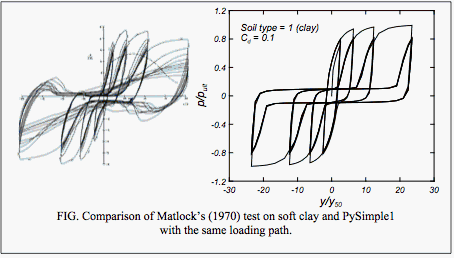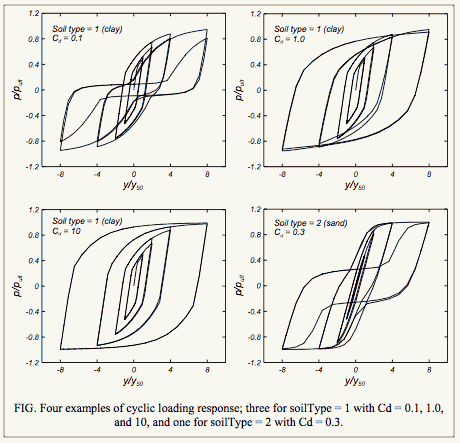PySimple1 Material: Difference between revisions
No edit summary |
No edit summary |
||
| Line 47: | Line 47: | ||
Code Developed by: <span style="color:blue"> Ross Boulanger, UC Davis </span>This command is used to construct a PySimple1 uniaxial material object: | Code Developed by: <span style="color:blue"> Ross Boulanger, UC Davis </span>This command is used to construct a PySimple1 uniaxial material object: | ||
Revision as of 23:21, 19 March 2010
- Command_Manual
- Tcl Commands
- Modeling_Commands
- model
- uniaxialMaterial
- ndMaterial
- frictionModel
- section
- geometricTransf
- element
- node
- sp commands
- mp commands
- timeSeries
- pattern
- mass
- block commands
- region
- rayleigh
- Analysis Commands
- Output Commands
- Misc Commands
- DataBase Commands
This command is used to construct a PySimple1 uniaxial material object:
| uniaxialMaterial PySimple1 $matTag $soilType $pult $Y50 $Cd <$c> |
| $matTag | integer tag identifying material |
| $soilType | soilType = 1 Backbone of p-y curve approximates Matlock (1970) soft clay relation.
soilType = 2 Backbone of p-y curve approximates API (1993) sand relation. |
| $pult | Ultimate capacity of the p-y material. Note that "p" or "pult" are distributed loads [force per length of pile] in common design equations, but are both loads for this uniaxialMaterial [i.e., distributed load times the tributary length of the pile]. |
| $Y50 | Displacement at which 50% of pult is mobilized in monotonic loading. |
| $Cd | Variable that sets the drag resistance within a fully-mobilized gap as Cd*pult. |
| $c | The viscous damping term (dashpot) on the far-field (elastic) component of the displacement rate (velocity). (optional Default = 0.0). Nonzero c values are used to represent radiation damping effects |
NOTES:
In general the HHT algorithm is preferred over a Newmark algorithm when using this material. This is due to the numerical oscillations that can develop with viscous damping forces under transient loading with certain solution algorithms and damping ratios.
EXAMPLE:
REFERENCES:
"Seismic Soil-pile-strcture interaction experiments and analysis", Boulanger, R.w., Curras, C.J., Kutter, B.L., Wilson, D.W., and Abghari, A. (1990). Jornal of Geotechnical and Geoenvironmental Engineering, ASCS, 125(9):750-759.
Code Developed by: Ross Boulanger, UC Davis This command is used to construct a PySimple1 uniaxial material object:

